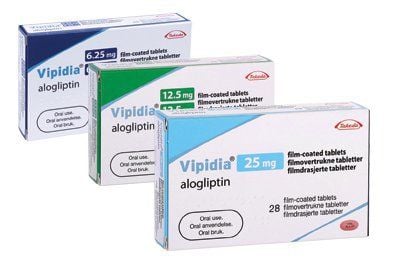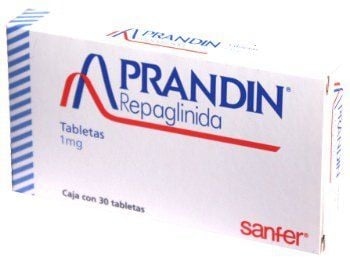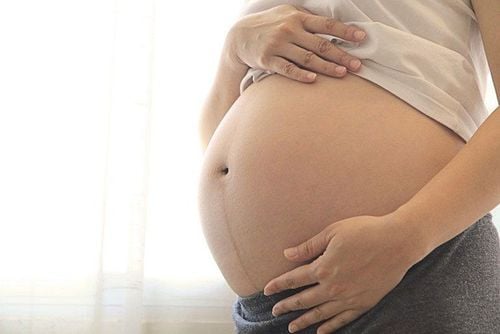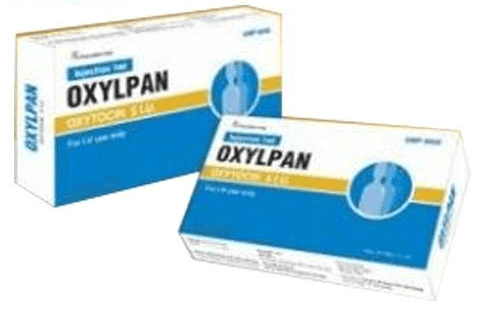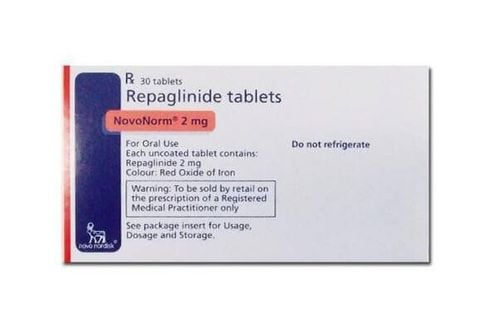This is an automatically translated article.
The article was professionally consulted by Specialist Doctor I Dang Thi Ngoc Chuong - Department of Pediatrics - Neonatology, Vinmec Central Park International General Hospital.Neonatal hyperglycemia can occur in many situations, such as premature birth, infection, fluids, or medication. Parents who have young children in this situation wonder if neonatal hyperglycemia is dangerous.
1. Overview of neonatal hyperglycemia
Glucose supply and metabolism plays an important role in normal growth and development in both fetuses and newborns. Disturbances in glucose availability or glucose utilization can lead to hypoglycaemia or hyperglycemia.Neonatal hyperglycemia is defined when the baby's Glucose test is in one of the following two ranges:
Blood glucose > 6.9 mmol/L (125 mg/dL); Serum glucose > 8 mmol/L (145 mg/dL). The condition, which occurs in about 25-75% of preterm infants, usually begins 3 to 5 days after birth. Neonatal hyperglycemia may persist for up to 10 days and stabilizes 2 to 3 days later. If a child has hyperglycemia >250 mg/dL, lasting for more than 7-10 days, it may be a sign of neonatal diabetes and requires insulin therapy.
Babies at risk for neonatal hyperglycemia are:
Premature birth ; Intrauterine growth retardation; Increased stress hormones, eg catecholamines; Infuse glucose solution at a higher rate than required; High-speed and early infusion of lipid solutions; Slow oral feeding.

2. Causes of neonatal hyperglycemia
Hyperglycemia in newborns can originate from many different causes, such as:Too much glucose infusion: Sugar supply > 4 - 5 mg/kg/min for preterm infants weighing less than 1000g may have can increase blood sugar; Certain drugs: The most common are steroids, which also include caffeine, theophylline, phenytoin and diazoxide; Extremely low birth weight: Specifically less than 1000g; Lipid infusion: Free fatty acids are implicated in neonatal hyperglycemia; Neonatal diabetes: This is a rare disease, usually associated with mutations in the KCNJ11 gene encoding Kir6.1 or the ABCC8 gene encoding SUR1; Pancreatic cell-related diabetes: Pancreatic hypoplasia, absence of pancreatic β-cells is common in children with low birth weight for gestational age, accompanied by other malformations; Other conditions: Infections, stressed preterm infants, hypoxia, postoperative infants, increased hepatic glucose production, or incompletely developed glucose transporter proteins (eg, GLUT-4).
3. Consequences of neonatal hyperglycemia
Answering the question "Is neonatal hyperglycemia dangerous?", doctors said that the first consequence of hyperglycemia is increased infant morbidity and mortality. In addition, neonatal hyperglycemia is also one of the risk factors leading to the following conditions:Immunodeficiency: Immunodeficiency makes children more likely to suffer from severe, persistent infections and multiple recurrences. The weak immune system of young children is not strong enough to cope with the disease, which will lead to severe complications or early death.
Increased risk of infection: Neonatal infections not only affect the baby's growth and development in terms of nerves, senses and organs, but also account for the second highest mortality rate (second only to children). respiratory distress syndrome in infants).
Slow wound healing: People with diabetes in general will not be able to heal damage on the body naturally. Skin wounds also take a long time to heal completely, causing pain, discomfort and susceptibility to infection.

Increased risk of cerebral hemorrhage: Is bleeding in the brain or meninges due to rupture of blood vessels in the brain, accounting for a high mortality rate and leaving severe sequelae for children.
Hyperosmolar hyperglycemic state (HHS): This condition is also known as hyperglycemia due to hyperglycemia, causing disturbances in consciousness, hyperosmolarity, and cellular dehydration without severe ketoacidosis. . Dehydrated diuretic children will experience weight loss, electrolyte imbalance, and increased serum osmolality, which eventually leads to altered osmotic pressure in the brain.
In addition, the consequences of neonatal hyperglycemia can also include bleeding under the skin due to intravenous injection and prolonged hospital stay of the patient.
4. Diagnosis and treatment of neonatal hyperglycemia
4.1. Diagnosis Neonatal hyperglycemia does not present with specific clinical symptoms, therefore the child should be tested for blood sugar for diagnosis and treatment if:Low birth weight neonate receiving intravenous nutrition ; Babies born prematurely, infected or seriously ill; Signs of dehydration appear rapidly in premature babies; Smaller for gestational age (SGA), polyuria, acidosis, thin subcutaneous fat, growth retardation, no/slow weight gain. If the newborn has diabetes, the test will show:
Increased blood glucose;
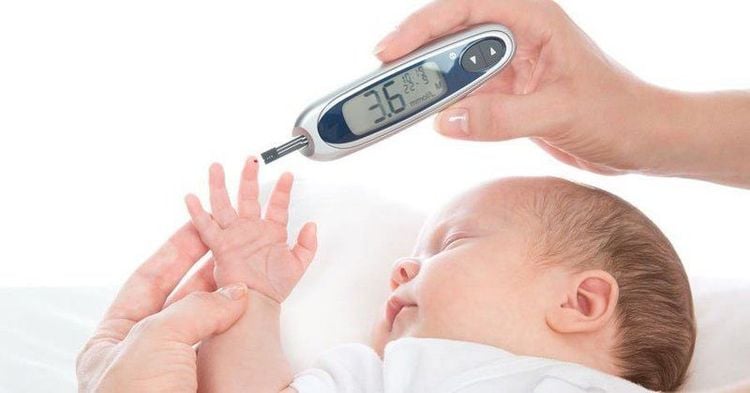
For low birth weight premature babies, it is necessary to receive adequate intravenous nutrition of amino acids and lipids. Attention must be given to oral feeding as soon as possible to help secrete certain insulin-stimulating hormones.
The treatment regimen is also based on the cause of the hyperglycemia. Children may need long-term intravenous insulin or oral sulfonylureas in the case of Kir6.2 and SUR1 deficiencies.
In summary, hyperglycemia often occurs during glucose infusion in neonates, especially those born prematurely. Neonatal hyperglycemia is a huge risk factor for neonatal mortality and morbidity, especially low birth weight survival.
Specialist I Dang Thi Ngoc Chuong has worked at Children's Hospital I, Thu Duc Hospital and University Hospital of Medicine and Pharmacy in Ho Chi Minh City. With strengths in neonatal diagnosis and examination - neonatal resuscitation, Dr. Chuong is currently a pediatrician at Vinmec Central Park International General Hospital and a member of the Ho Chi Minh City Pediatric Association. Bright.
Recommended video:
Instructions on how to dress a newborn - Together with the mother to properly care for the baby
SEE MORE:
The role of blood glucose determination Causes of unstable blood sugar Children eat bags How much sugar per day is enough?
Please dial HOTLINE for more information or register for an appointment HERE. Download MyVinmec app to make appointments faster and to manage your bookings easily.





